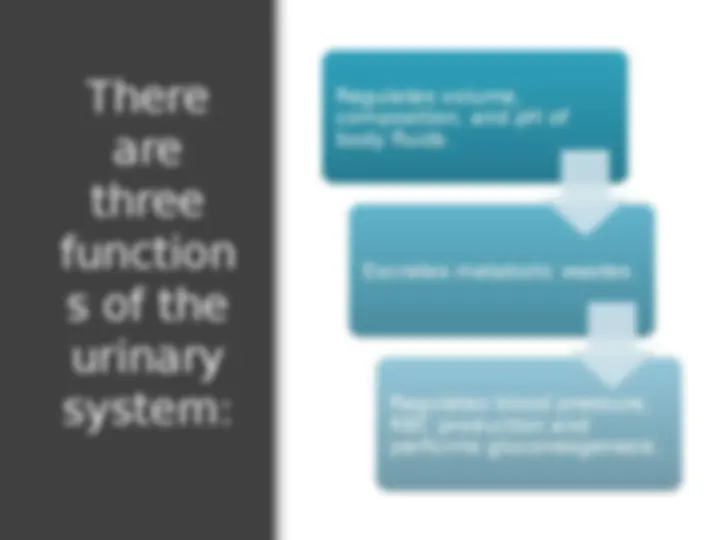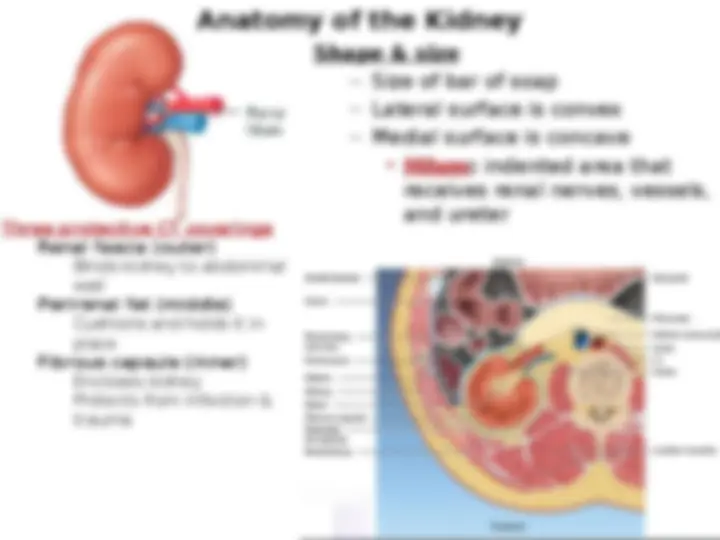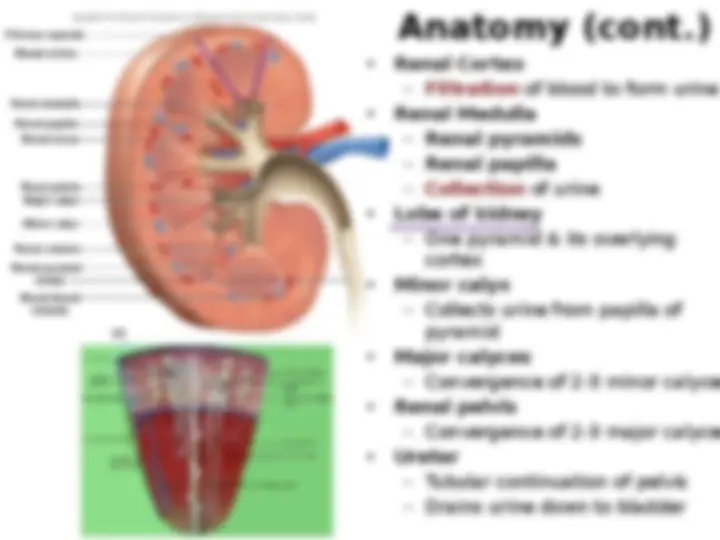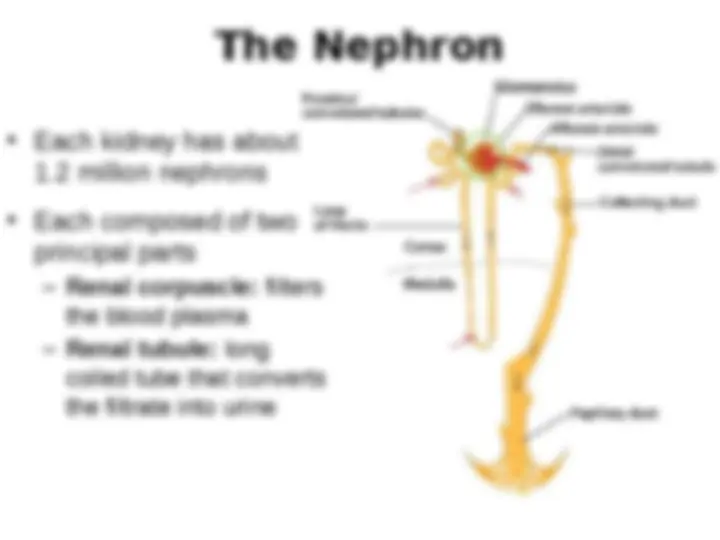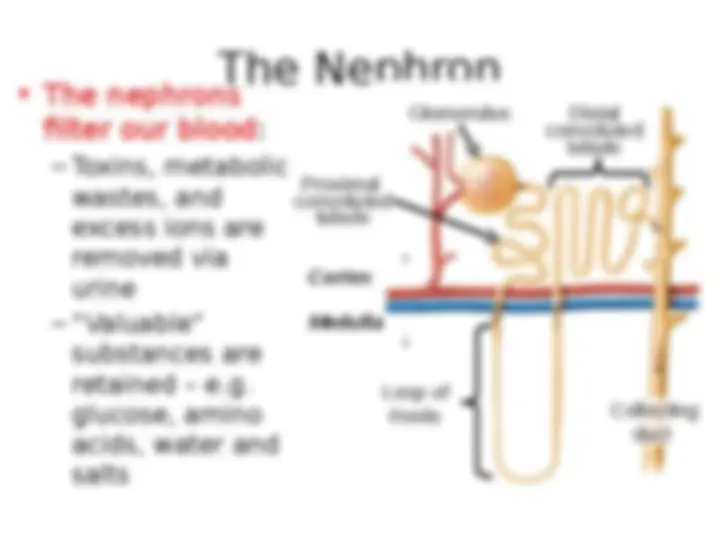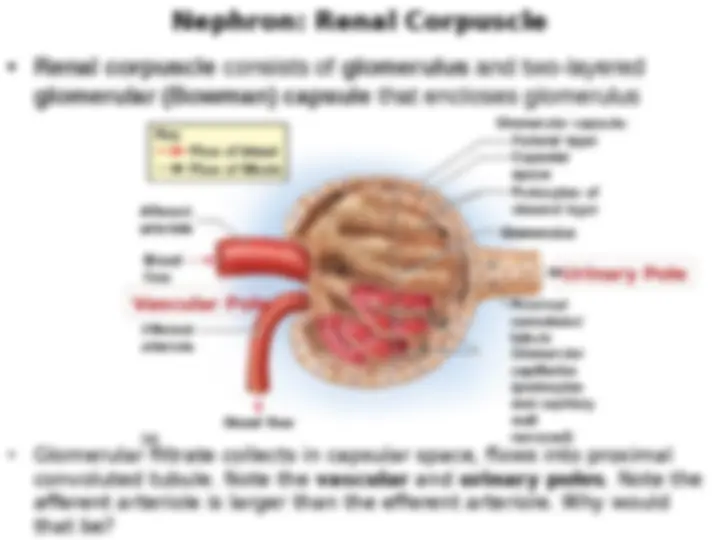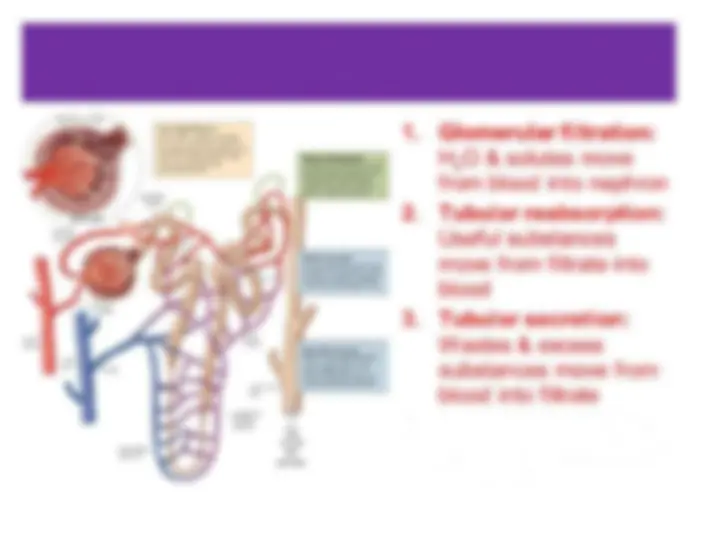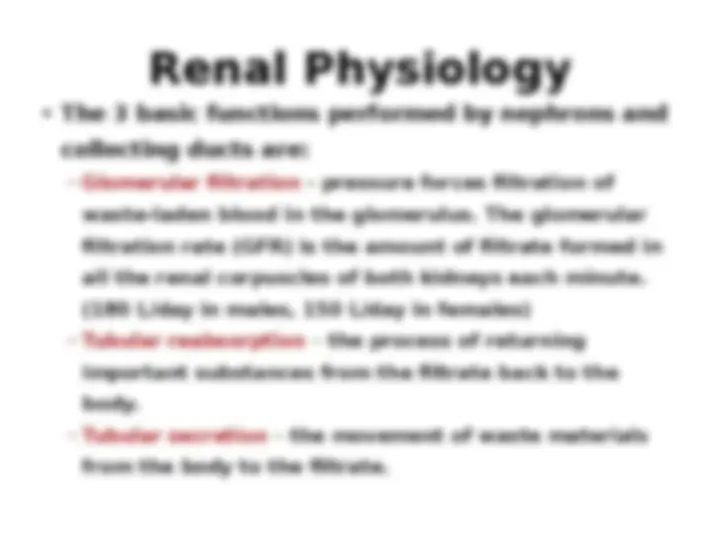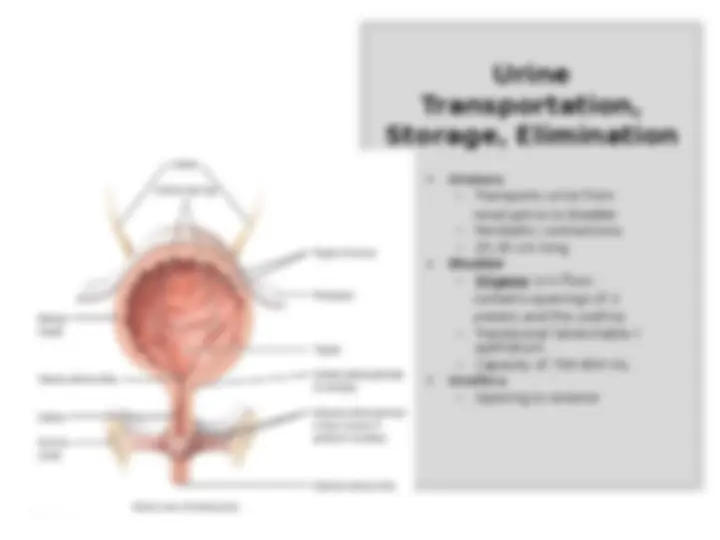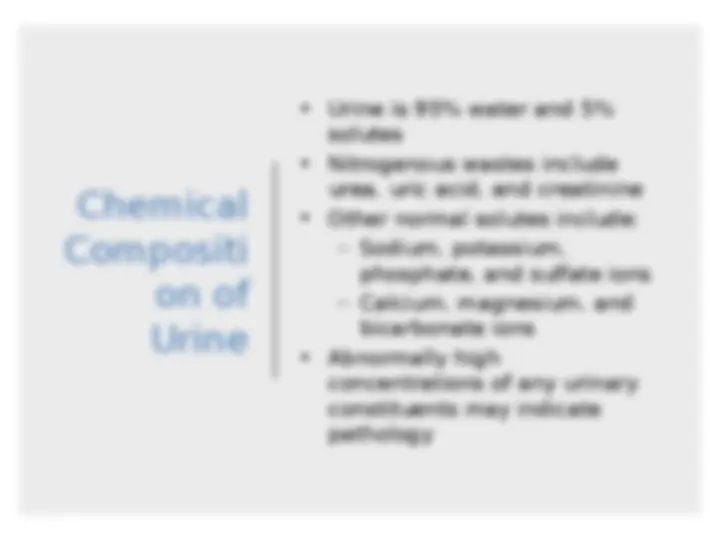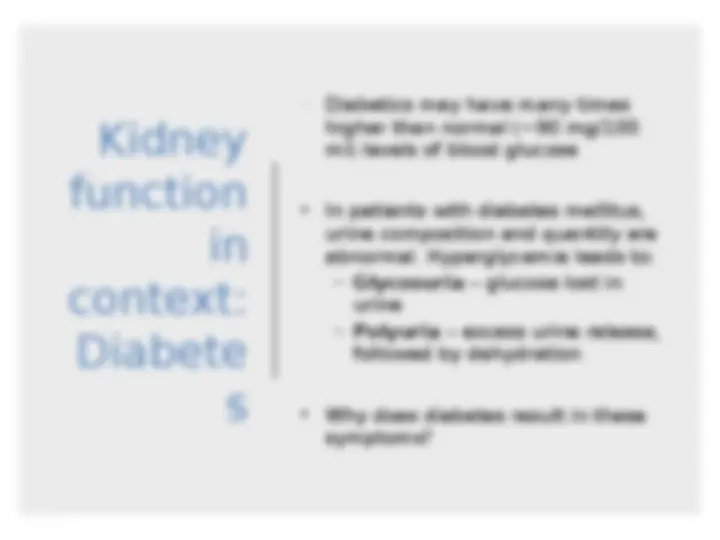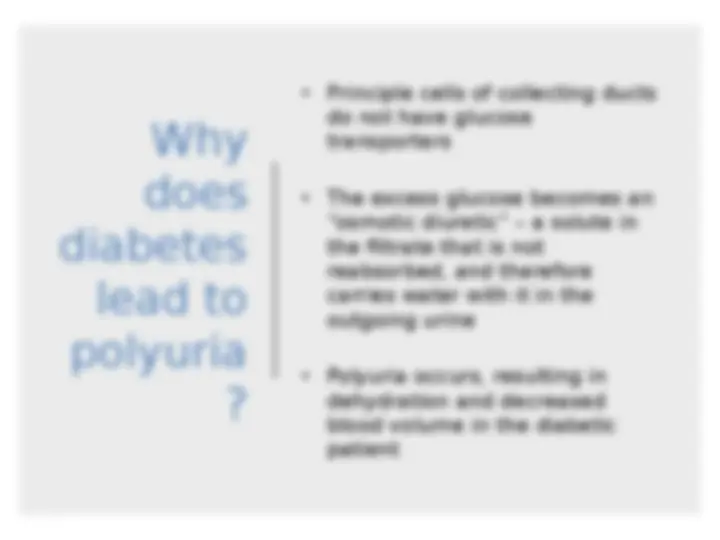Download Urinary System Lecture Notes and more Lecture notes Anatomy in PDF only on Docsity!
The
Urinary
System
Urinary system consists of six organs:
two kidneys, two ureters, urinary bladder, and urethra
Location of the
Kidney
- (^) Retroperitoneal
- (^) Located at level of T12-L
- (^) Protected by ribs 11 and 12
- (^) Right kidney slightly lower than left because of liver
Anatomy of the Kidney
Shape & size
- (^) Size of bar of soap
- (^) Lateral surface is convex
- (^) Medial surface is concave
- (^) Hilum: indented area that receives renal nerves, vessels, and ureter Three protective CT coverings Renal fascia (outer) Binds kidney to abdominal wall Perirenal fat (middle) Cushions and holds it in place Fibrous capsule (inner) Encloses kidney Protects from infection & trauma
Anatomy (cont.)
- (^) Renal Cortex
- (^) Filtration of blood to form urine
- (^) Renal Medulla
- (^) Renal pyramids
- (^) Renal papilla
- (^) Collection of urine
- (^) Lobe of kidney
- (^) One pyramid & its overlying cortex
- (^) Minor calyx
- (^) Collects urine from papilla of pyramid
- (^) Major calyces
- (^) Convergence of 2-3 minor calyce
- (^) Renal pelvis
- (^) Convergence of 2-3 major calyce
- (^) Ureter
- (^) Tubular continuation of pelvis
- (^) Drains urine down to bladder
The Nephron
- (^) Each kidney has about
1.2 million nephrons
principal parts
- (^) Renal corpuscle: filters
the blood plasma
coiled tube that converts
the filtrate into urine
Nephron: Renal Corpuscle
- (^) Renal corpuscle consists of glomerulus and two-layered
glomerular (Bowman) capsule that encloses glomerulus
- (^) Glomerular filtrate collects in capsular space, flows into proximal
convoluted tubule. Note the vascular and urinary poles. Note the afferent arteriole is larger than the efferent arteriole. Why would that be?
Vascular Pole
Urinary Pole
Glomerulus
- (^) Enlarged, smooth muscle cells of arteriole
- (^) Act as mechanoreceptors that sense blood pressure
Efferent arteriole
Afferent arteriole
Glomerulus
PCT
Renal Physiology
- (^) The 3 basic functions performed by nephrons and
collecting ducts are:
- (^) Glomerular filtration - pressure forces filtration of
waste-laden blood in the glomerulus. The glomerular filtration rate (GFR) is the amount of filtrate formed in
all the renal corpuscles of both kidneys each minute.
(180 L/day in males, 150 L/day in females)
- (^) Tubular reabsorption – the process of returning
important substances from the filtrate back to the body.
- (^) Tubular secretion – the movement of waste materials
from the body to the filtrate.
Countercurrent Multiplier
Osmotic Gradient in the Renal
Medulla
Pelvis
Ureter
Kidney
function
in
context:
Diabete
s
- (^) Diabetics may have many times higher than normal (~90 mg/ ml) levels of blood glucose
- (^) In patients with diabetes mellitus, urine composition and quantity are abnormal. Hyperglycemia leads to: - (^) Glycosuria – glucose lost in urine - (^) Polyuria – excess urine release, followed by dehydration
- (^) Why does diabetes result in these symptoms?
Why
does
diabetes
lead to
polyuria
- (^) Principle cells of collecting ducts do not have glucose transporters
- (^) The excess glucose becomes an “osmotic diuretic” – a solute in the filtrate that is not reabsorbed, and therefore carries water with it in the outgoing urine
- (^) Polyuria occurs, resulting in dehydration and decreased blood volume in the diabetic patient

